C.A.A. Savastano's Blog, page 12
September 20, 2018
New Monographs Update: Problems in Black and White
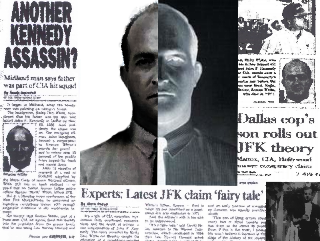
The prior contended story of Roscoe White despite its lackluster ideas is still advocated by some and the subject of at least one new book. These ideas are compared to verifiable evidence and the evolving associated claims. #JFK #evidence #myth
September 9, 2018
JFK 101 part 15
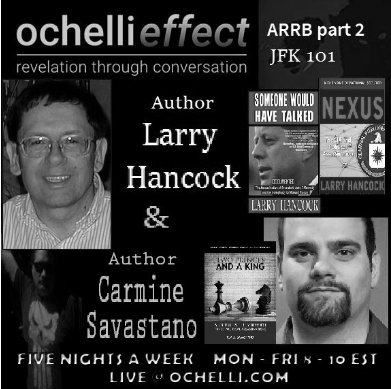
The Ochelli Effect Returns! Join author Carmine Savastano, historian Larry Hancock, and your host Chuck Ochelli for JFK 101 Part 15 "The ARRB part 2". They discuss the advancements and failures of the Assassination Records Review Board related to the JFK inquiry. #JFK #ARRB #evidence
August 29, 2018
JFK 101 part 14

JFK 101 continues with your host Chuck Ochelli, historian Larry Hancock, and researcher Carmine Savastano, in this episode they discuss the events that led to the formation of the Assassination Records Review Board. #JFK #NMG https://ochelli.com/jfk-101-arrb-part...
August 12, 2018
The Ochelli Effect JFK Myths Part 14
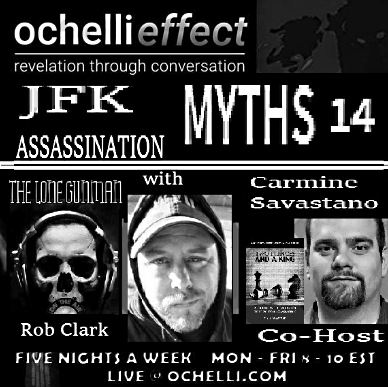
Your host Chuck Ochelli, researcher Rob Clark, and C.A.A. Savastano the author of "Two Prince's And A King" reunite to discuss public and official myths in the assassination case of President John F. Kennedy.
July 30, 2018
The Ochelli Effect presents Project CAUTERY
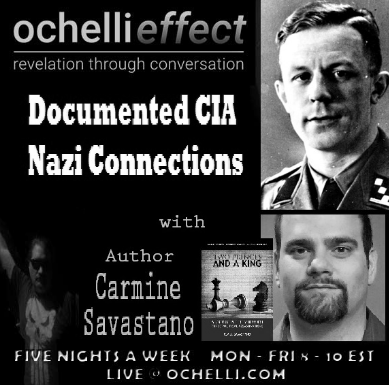
The Ochelli Effect returns with your host Chuck Ochelli and C.A.A. Savastano to discuss a cryptonym (codename) related to the JFK case and one notable 1950s CIA Project seeking to recruit defectors from Soviet controlled East Germany. #CIA #1950s #history #evidence
July 27, 2018
Note the Chain
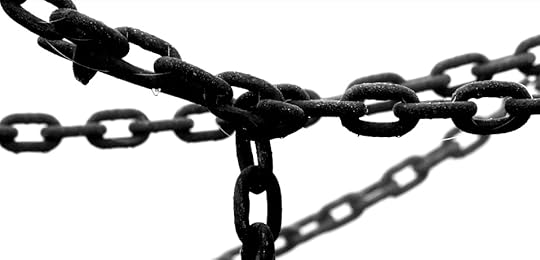
All humans are pattern-seeking creatures because the recognition of valid patterns is an evolutionary mechanism in the human brain. While indeed overreliance on seeking just self-gratifying patterns can lead to false connections and incorrect speculations, patterns based on verifiable evidence do not often suffer from these pitfalls. When a chain of events occurs with a pattern established in evidence, it feasibly leads to reasonable questions and new facts. The chain of historical events if studied closely might reveal the yet unseen connections and present that what once is dismissed with scorn can still be true.
Depending on whom you consult, Lee Harvey Oswald is a figure concealed in the historical misnomers of "convicted assassin" and "innocent proven spy". He was part of a significant chain of historical events that reaches back much farther than November 22, 1963. During the course of events Oswald prior encounters three notable people a world away in Moscow, Patricia Johnson McMillan, Richard Snyder, and John McVickar. Oswald ventures to the United States Embassy on October 31, 1959 and his life was set upon a fateful path where each of these people would play a role in Oswald's journey within Russia and even years after his death.
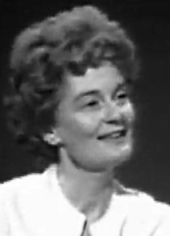
Priscilla J. McMillan
Evidence prior revealed that reporter Priscilla McMillan had direct connections to the CIA while serving as one of its many contacts in Moscow and one of her links in the Domestic Contacts Division was employee Gary Coit. Agency officials were previously concerned that McMillan could be asked to discuss her official contacts with the House Select Committee on Assassinations because if the "CIA relationship is presented, Gary Coit (retired, DCD) may be subpoenaed."i However, officials had no need to worry because despite HSCA officials securing the release of secrecy agreements with connected witnesses, McMillan still denied her Agency connections that evidence would firmly establish decades later. This is notable because despite the opportunity to be honest with investigators without legal repercussion she chose to deceive them. She was just one of many associated with the CIA to do so. While Coit told investigators privately that his associations with McMillan in the early 1960s did not have espionage related dimensions, this does not explain her prior work that began in the late 1950s years before she encountered Oswald.
The first Agency connected person Oswald encountered in Moscow was the Second Secretary of the US Embassy Richard Snyder, the embassy official that dealt with Oswald's attempt to renounce his American citizenship. Snyder is a confirmed former Agency employee that also had contacts with Oswald directly and he is among those whose actions enable Lee Harvey Oswald's return to the United States. As each additional person connected to the CIA emerges, it constructs a pattern within this chain of events and perhaps McMillan and Snyder might not be the only Agency connected people engaging Oswald at the time. A CIA draft working paper that presented questions and issues offered by the Assassinations Records Review Board (ARRB) in 1997 regards the "doctoring" of personnel files and 201 files in the record. Separate investigations note this practice multiple times by studying other related documents to verify changes and conflicting accounts. An example question ARRB Counsel T. Jeremy Gunn posed regarding the issue was "i.e., could John McVickar ever have been an employee?"ii
John Anthony McVickar was born in Manhattan, New York on May 22, 1924; he was educated at St Mark's High School, Georgetown University, and served during WWII in the United States Navy. Subsequently, McVickar attended the US Foreign Service School in 1948, and both he and Richard Snyder were on the same waiting list for employment with the US State Department's Foreign Service. The CIA later recruits Snyder in the Foreign Service using State Department cover and McVickar later testified he too gained State Department employment but without any intelligence connections.iii Yet repeated evidence challenges this assertion by linking him to multiple intelligence matters.
A file dated November 8, 1949 states that McVickar was the longtime friend of a CIA affiliated person code-named UNMOVED. This person suggests the Agency employ McVickar because of his several European official friendships and officials state the "subject appears to be the type of individual which might be ideally suited to fulfill certain valuable operational assignments...such as spotter for other high-level potential agents, high level contacts, cut-outs, etc. All who know him agree that subject is capable of 'doing anything and getting to know anyone' if he so chooses." The sterling appraisal continues offering that McVickar is "...a serious minded, intelligent and patriotic individual who has had much experience along lines which could be of use to this organization". Strikingly the assessment reveals, "It is our thought that perhaps subject's unusual personality and in the cover job he now occupies could be exploited to advantage by this Station and the organization as a whole."iv A personal assessment of McVickar by Agency officials queries the "type of information furnished and what type is he expected to furnish in the future". These details would support that McVickar was a longtime friend and perhaps a source of intelligence for UNMOVED and the value of his future possible intelligence production was being assessed for direct employment.v
Provisional Operational Clearance and the chance to approach McVickar for Agency employment were requested December 11, 1949.vi Agency officials were still attempting to court McVickar early the next year for employment but financial demands weighed against his relative inexperience concerning spycraft caused officials to deny the request during that period. Yet John McVickar soon gains a position with the State Department's Foreign Service branch, the same cover utilized by Richard Snyder during his time at the CIA. McVickar utilized his extensive contacts for the US State Department in Western Europe to secure American foreign policy goals during the following years in Russia, Bolivia, India, and British ruled Hong Kong. The Agency assigns him to Moscow Embassy in 1959 and this placed him among those who encounter Lee Harvey Oswald.
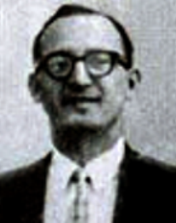
Richard E. Snyder
John A. McVickar was Richard Snyder's embassy subordinate, he was present but largely only listened to Snyder and Oswald's interaction. McVickar soon discussed the interaction between Oswald and Snyder with reporter Priscilla Johnson McMillan and suggested that she conduct an interview out of asserted concern. The next day McMillan joins McVickar for dinner to discuss Oswald and in early November of the same year McVickar reportedly attempted to deliver a message to Oswald from his brother John Pic but states there was no answer from Oswald's hotel door and this prompted McVickar to resend the message by certified mail. A Chronology of Oswald's life crafted by the President's Commission states McVickar notified Oswald about the correct procedure for obtaining his Russian wife a visa. A later immigrant visa application filed on behalf of Marina Oswald by Lee Oswald on July 11, 1961 and was "subscribed and sworn...before John A. McVickar, Consul of the US Embassy in Moscow."vii By the year's end, McVickar replaces Richard Snyder as Second Secretary of the US Moscow Embassy.
A document of interest regarding McVickar offers the Agency learned that Russian intelligence services attempted to catch McVickar in a "honey trap". This method is utilized by intelligence organizations to orchestrate a planned sexual encounter for compromising a target and subjecting them to blackmail. Should the encounter be recorded or witnessed it provides the threat of exposure and creating dire personal or professional consequences. Based on the allegations of KGB defector Yuriy Nosenko using the pseudonym "Sammy" the woman approaching McVickar was referred to as "Svetlana", McVickar was noted to resist consummating the relationship and this attempt reportedly failed. Perhaps most interesting is that Nosenko mentions that the multiple officials in the KGB were interested in McVickar due to a suspicion that "he was connected, an agent or a trusted person" concerning United States intelligence groups.viii The circumstances of Nosenko's claims are supported by later conversations Richard Snyder had with McVickar and discussed with House Select Committee investigators. This allegation displays enemy intelligence suspected McVickar being a cover agent, asset, or contact of American intelligence and is worth expending intelligence resources to entrap.
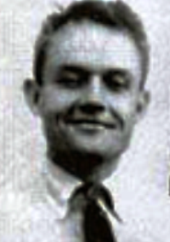
John A. McVickar
During 1966, the CIA's Chief of Employee Activity Branch approves Top Secret security approval for John A. McVickar to serve as a liaison contact for the Agency.ix June 20, 1968 the Agency learns the "East German list of Who's Who in the CIA" contained multiple people with intelligence associations reportedly dating into the 1950s. Among those exposed was Richard Snyder and John Anthony McVickar, both men have the status of State Department employee and no denial accompanies these statements usually observed in other internal documents regarding unrelated baseless employment accusations directed at officials.x xi xii The House Select Committee questioned McVickar if he had worked in any capacity with the Central Intelligence Agency. Despite all the evidence of his affiliations with the CIA, that he was granted liaison status, and his years long affiliation being a feasible source of information for one agent serving the CIA, he told officials he never served the Agency in any capacity.
The people Oswald encountered on his first day in Moscow are likely no mere coincidence; but it does not infer a wide-ranging assassination plot setting up its patsy years prior. It does support the reasonable consideration that Oswald could have been an unwitting cutout, contact, or minor agent in the crossfire of large counterintelligence operations before he returned to the United States. The later consideration of one Agency Soviet Russia Division officer interested with gathering intelligence via Oswald adds clarity to the proposition. Consider now Oswald's later interactions with Cuban exiles and those associated with official groups and the weight of what some consider flimsy becomes significantly more substantial. While the events in Moscow have no definite connection to the events in Dallas, it does further establish an enduring interest and the repeated interaction with Oswald by those in the service or with demonstrable connections to CIA agents, contacts, and assets. His first days in Russia were just as notable as his last days in Texas because of the intelligence net that seems to entangle him.
The embassy staff noted Richard Snyder's initial questionable treatment and possibly goading Oswald to complete his defection to Russia, Snyder too is among those who later meet with Oswald to secure his return to America. Priscilla Johnson McMillan interviewed Oswald at the prompting of McVickar and spent years in the press attempting to mold him into the angry man officials had decreed. John McVickar was assertedly concerned for Oswald suggested a local hotel that Priscilla McMillan resides at while later advising McMillan to interview him. Additionally, McVickar meets with her the next evening to discuss it over dinner, and later assists the Oswald family's immigration. He now too is among those with Agency connections who encountered Oswald multiple times. Meeting three people further set Lee Harvey Oswald toward his path of eventual infamy, the chain begun in Moscow would forever change his life and world history.
Sincerely,
C.A.A. Savastano
References:
i. House Select Committee on Assassinations, Segregated Central Intelligence Agency Collection, Box 35, Memo: HSCA - A Projection, National Archives and Records Administration Identification Number: 104-10096-10160
ii. Central Intelligence Agency, Draft Working Paper: Talking Points for Files Briefing/ARRB, February 7, 1997, NARA ID:104-10333-10017, p. 1
iii. HSCA, Segregated CIA file, Staff Notes, (n.d.), NARA ID: 180-10141-10488, p. 17
iv. Central Intelligence Agency, CIA File on McVickar, John A., NARA ID: 104-10177-10221, p. 2
v. Ibid, Personal Record of (redacted), p. 11
vi. Ibid, Message to Special Operations, p. 1
vii. President's Commission Document 818, CIA Helm Memorandum of 21 Apr 1964 re: Revisions Oswald Chronology, p.
viii. HSCA, Seg. CIA file, John A. McVickar: OS/SAG Files provided to the HSCA, Follow-up with Sammy on John A. McVickar, August 1964, NARA ID: 1993.07.21.11:12:59:810620
ix. HSCA, Seg. CIA file, Request for Approval of Liaison for John A. McVickar, NARA ID: 104-10121-10042
x. HSCA, Seg. CIA file, J.A. McVickar..., Subject: McVickar, John Anthony, June 20, 1968
xi. HSCA, Miscellaneous CIA Series, Miscellaneous documents from AARC CIA Collection, Box 113, June 20, 1968
xii. HSCA, Seg. CIA file, John A. McVickar..., Page from East German "Who's Who in the CIA", (n.d.)
July 4, 2018
Consolidated CIA Files update

Presenting the latest update to the Consolidated CIA Files that includes new evidence and summaries regarding Mexico City Station officer Charles E. Flick, Costa Rican Chief of Station Earl J. Williamson, and Grayston Lynch. Additionally inspect new photographs of some prior mentioned in addition to Robert Zambernardi, Guy Vitale, Sylvia Hyde Hoke, Lee Wigren, Calvin Hicks, and Daniel Flores. Over fifty summaries in total are offered with verifiable evidence and biographic information for your review.
June 15, 2018
JFK 101 part 13: The HSCA episode 2
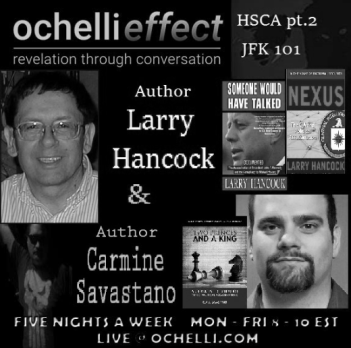
Historian Larry Hancock, author C.A.A. Savastano, and your host Chuck Ochelli present a continuing review of the JFK case. In this episode, they discuss the House Select Committee on Assassinations and a portion of their later JFK case inquiry
June 7, 2018
Primary Evidence Collections Update: RFK Section

Presented for your inspection is a summary and review of several possible candidates that may explain various official and witness claims and speculations regarding the identity of a mystery woman alleged to be at the scene of Senator Robert F. Kennedy's assassination. #RFK50 #assassination #evidence
June 1, 2018
A Discussion of WIROGUE-1

Join your host Chuck Ochelli and author C.A.A. Savastano to discuss the life, crimes, and Central Intelligence Agency sabotage and potential assassination operation using David Tzitzichvili aka WIROGUE-1.



